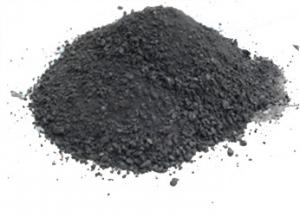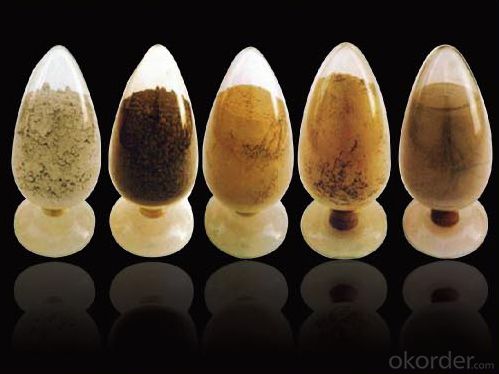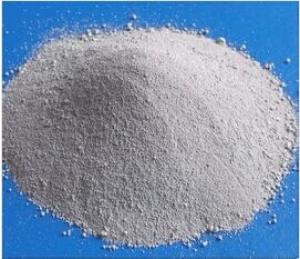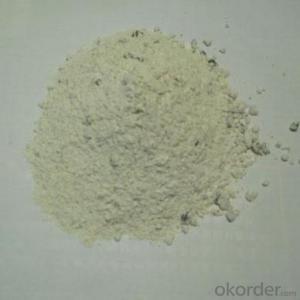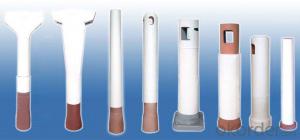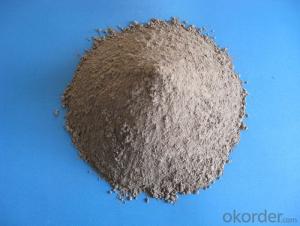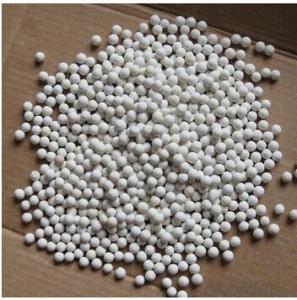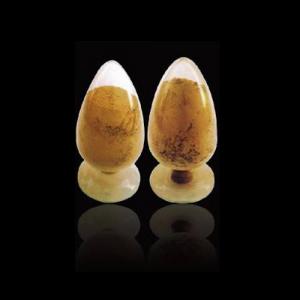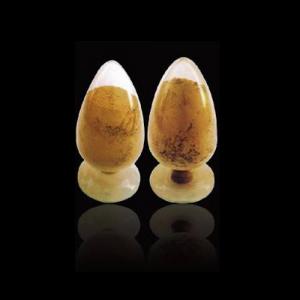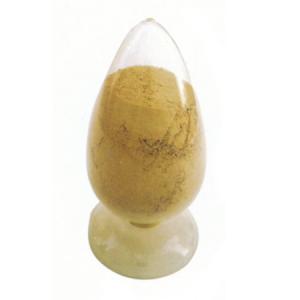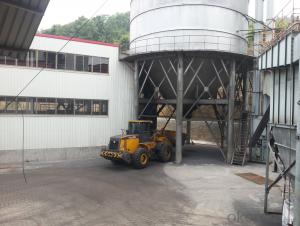Monolithic Refractories for Iron and Steel Industry:Gunning Mass Refractory Material
- Loading Port:
- Shanghai
- Payment Terms:
- TT or LC
- Min Order Qty:
- 20000 kg
- Supply Capability:
- 100000000 kg/month
OKorder Service Pledge
OKorder Financial Service
You Might Also Like
General Information of Gunning Mass
Gunning mass refractories is product that is used in various part of furnace as Monolithic Refractories that added hydraulic alumina cement to refractory aggregate.
Our Company is producing suitable product to installation and working condition through a quality control, this product which is minimizing alumina cement for using various dispersants and ultra fine powder so it has excellent abrasion resistance, erosion resistance, spalling resistance and chemical resistance . It widely used in part of various industrial furnace including incinerator, nonferrous metal furnace etc.
Features of Gunning Mass
High refractoriness, High refractoriness under load
High density, low porosity
Good slag resistance and corrosion resistance
High strength and wear resistance
Good resistance to flake performance
Good thermal shock stability
Scouring resistance
Good hot strength
Technical Data Sheet of Gunning Mass
CA-190 | CA-185 | CA-180 | CA-175 | CA-170 | CA-165 | CA-160 | CA-155 | CA-150 | CA-140 | |||
Properties | ||||||||||||
Application Limit Temp | 1,800 | 1,800 | 1,750 | 1,700 | 1,700 | 1,650 | 1,600 | 1,550 | 1,500 | 1,400 | ||
Bulk Density (g/cm3) | 2.9 | 2.85 | 2.8 | 2.6 | 2.5 | 2.3 | 2.15 | 2.1 | 2.1 | 2 | ||
Water Required for Casting(%) | 9-10 | 9-10 | 11-12 | 11-12 | 10-13 | 11-14 | 12-15 | 13-16 | 13-16 | 13-17 | ||
CCS/MOR | 110ºCx24h | 55(9) | 30(6) | 30(6) | 30(6) | 25(5) | 25(5) | 20(4) | 20(4.5) | 25(5) | 20(5) | |
1,200ºCx3h | 50(8) | 35(7) | 35(7) | 30(7) | 20(4) | 17(3.5) | 15(3.5) | 15(2.5) | 17(4) | 14(3) | ||
1,400ºCx3h | 60(10) | 50(8) | 60(10) | 60(10) | 50(12) | 45(8) | 40(7) | 40(7) | 32(7.5) | - | ||
Permanent Linear Change(%) | 110ºCx24h | -0.03 | -0.03 | -0.06 | -0.06 | -0.06 | -0.06 | -0.06 | -0.06 | -0.06 | -0.06 | |
1,200ºCx3h | -0.1 | -0.1 | -0.15 | -0.15 | -0.2 | -0.2 | -0.16 | -0.3 | -0.25 | -0.3 | ||
1,400ºCx3h | -0.2 | -0.2 | -1 | -1 | -0.8 | -1 | -1 | -0.7 | - | - | ||
Thermal conductivity(W/m.k) | 400ºC | 0.95 | 0.95 | 0.92 | 0.92 | 0.8 | 0.72 | 0.68 | 0.68 | 0.65 | 0.6 | |
1,000ºC | 1.1 | 1.05 | 1.02 | 1.02 | 0.9 | 0.85 | 0.88 | 0.8 | 0.76 | 0.71 | ||
Chemical Analysis(%) | Al2O3 | 92 | 88 | 82 | 75 | 62 | 55 | 50 | 47 | 44 | 35 | |
SiO2 | - | - | 10 | 10 | 29 | 40 | 43 | 45 | 50 | 55 | ||
Photo of Gunning Mass
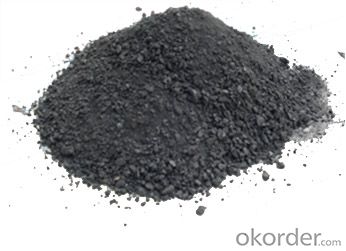
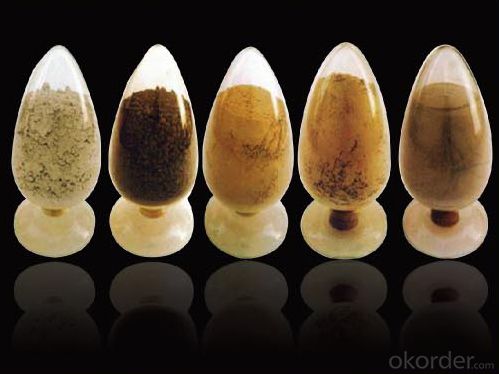
- Q: What are the common manufacturing processes used for monolithic refractories?
- The common manufacturing processes used for monolithic refractories include mixing the raw materials, shaping the mixture into the desired form, and then curing or firing it at high temperatures to achieve the desired strength and properties. Some specific processes used are casting, gunning, ramming, and spraying.
- Q: How do monolithic refractories contribute to the overall productivity of iron and steel production?
- Monolithic refractories play a crucial role in enhancing the overall productivity of iron and steel production. These refractories are widely used in various applications such as furnaces, ladles, and tundishes, offering excellent thermal stability and resistance to chemical attacks. By providing a durable lining, monolithic refractories ensure longer campaigns and reduced downtime for repairs and maintenance. This leads to increased production efficiency, reduced energy consumption, and improved product quality, ultimately contributing to the overall productivity of iron and steel production.
- Q: How are monolithic refractories used in the iron and steel industry?
- Due to their exceptional performance and versatility, monolithic refractories are widely utilized in various applications within the iron and steel industry. Composed of a uniform material, these refractories serve as seamless linings in high-temperature environments. In the iron and steel industry, the significance of monolithic refractories cannot be overstated as they play a crucial role in multiple stages of the manufacturing process. A primary application is seen in the blast furnace, where the inside of the furnace is lined with monolithic refractories. This lining is exposed to exceedingly high temperatures and harsh chemical reactions. By providing excellent thermal insulation and resistance to chemical attack, monolithic refractories ensure the durability and longevity of the blast furnace. Another crucial application is witnessed in the steelmaking process, where monolithic refractories are used to line the ladles and tundish, utilized for transporting and pouring molten steel. These refractories are specially designed to withstand the corrosive nature and high temperatures of the molten steel, thus preventing contamination and guaranteeing the quality of the final product. Furthermore, monolithic refractories find application in various ancillary equipment and structures within the iron and steel industry. They are employed in furnaces, kilns, and other heat treatment systems to provide insulation and maintain high-temperature conditions. Additionally, they are used in the construction of chimneys, exhaust ducts, and other exhaust systems, where they offer thermal insulation and resistance against corrosive gases. Overall, the vital role played by monolithic refractories in the iron and steel industry lies in their ability to provide high-temperature insulation, chemical resistance, and durability. They optimize the production process, enhance energy efficiency, and ensure the quality of the final product. With their exceptional performance and versatility, monolithic refractories have become an indispensable component within the iron and steel manufacturing industry.
- Q: What are the key properties of monolithic refractories?
- Monolithic refractories are a type of refractory material that are unshaped or shapeless, meaning they do not have a definite form like bricks or tiles. Instead, they are typically composed of a mixture of aggregates, binders, and additives that can be easily molded and installed in various industrial applications. The key properties of monolithic refractories are: 1. High temperature resistance: Monolithic refractories are designed to withstand extremely high temperatures, making them suitable for applications in industries such as steel, cement, glass, and petrochemicals. They can maintain their strength and structural integrity even at temperatures exceeding 3000 degrees Fahrenheit. 2. Thermal shock resistance: Monolithic refractories have the ability to resist thermal shock, which is the sudden change in temperature that can cause cracking or damage to the refractory. This property is essential in environments where rapid heating or cooling occurs, such as in furnaces or kilns. 3. Chemical resistance: Monolithic refractories exhibit excellent resistance to chemical attack and corrosion from molten metals, slag, gases, and other harsh substances. This makes them ideal for use in environments where they come into contact with acidic or alkaline materials. 4. Low porosity: Monolithic refractories have low porosity, which means they have a high density and are less permeable to gases and liquids. This property helps to prevent the penetration of molten metals or corrosive substances into the refractory, ensuring its longevity and performance. 5. Easy installation and repair: Unlike traditional refractory materials like bricks, monolithic refractories can be easily molded and installed in various shapes and sizes. They can be applied by spraying, casting, or ramming techniques, allowing for faster installation and reduced downtime. Additionally, they can be easily repaired or patched if any damage occurs. 6. Good mechanical strength: Monolithic refractories possess adequate mechanical strength to withstand the stresses and pressures encountered during their service life. This ensures their structural integrity, even under high load conditions. Overall, the key properties of monolithic refractories make them a versatile and reliable choice for a wide range of industrial applications where high temperature resistance, chemical resistance, and thermal shock resistance are required.
- Q: How are monolithic refractories installed and repaired in iron and steel applications?
- To ensure optimal performance and longevity in iron and steel applications, specific procedures are employed for the installation and repair of monolithic refractories. The installation process typically involves the following steps: 1. Proper surface preparation is crucial. This entails removing loose material, dirt, and dust to create a smooth and clean substrate that facilitates good adherence of the refractory material. 2. The refractory material, supplied as dry powders or granules, is mixed with water or a specific bonding agent according to the manufacturer's instructions to achieve the desired properties. 3. The mixed refractory material is then applied to the prepared surface using techniques such as troweling, spraying, or casting, depending on the installation requirements and the type of monolithic refractory. 4. Curing is necessary to maximize the strength and durability of the refractory material. The curing process can involve air drying, heat treatment, or a combination of both, in accordance with the specific refractory material's recommendations. When it comes to repairing monolithic refractories in iron and steel applications, the following steps are generally followed: 1. Thorough assessment of the damaged area or component is conducted to determine the extent of the damage and the appropriate repair method. 2. The damaged monolithic refractory material is carefully removed using suitable tools and techniques while ensuring the underlying substrate remains intact. 3. Similar to the installation process, the surface where the repair will take place is cleaned and prepared by removing any loose material, dirt, and dust. 4. The repair material, typically the same or similar to the original monolithic refractory, is mixed and applied to the damaged area. The application method may vary depending on the nature of the repair and the specific requirements of the refractory material. 5. The repaired area is properly cured and inspected to ensure the quality and effectiveness of the repair, following the manufacturer's guidelines for curing and post-repair inspection procedures. In conclusion, the meticulous execution of surface preparation, proper mixing and application of refractory material, and appropriate curing procedures are essential for the installation and repair of monolithic refractories in iron and steel applications. These steps guarantee reliable and durable refractory linings, which are vital for the efficient operation of iron and steel processes.
- Q: What are the different types of monolithic refractories used in the iron and steel industry?
- The iron and steel industry relies on various types of monolithic refractories for their exceptional thermal resistance, strength, and durability. These refractories are crucial in withstanding extreme temperatures and harsh conditions in a range of applications. Firstly, there are castables, which are precast refractory materials that form a slurry when mixed with water. This slurry is then poured or cast into molds. Castables are widely used in the iron and steel industry to line ladles, tundishes, and furnaces due to their high strength and resistance to thermal shock. Another type is ramming mass, which is used to line induction furnaces and melting units. It is composed of refractory aggregates, binders, and additives. Ramming mass is applied by ramming or tamping it into place, creating a dense lining capable of withstanding high temperatures and chemical attacks. Gunning mix is a refractory material applied using a pneumatic gunning machine. It is particularly useful for repairing or lining various areas of furnaces, especially during hot repairs. Gunning mix consists of refractory aggregates, binders, and additives that are sprayed onto the lining surface and then compacted. Plastic refractories, on the other hand, are mixtures of refractory aggregates and binders with high plasticity. They can be easily molded or shaped, making them ideal for repairing or patching refractory linings in the iron and steel industry. Plastic refractories are typically applied by hand or with a trowel and are suitable for both hot and cold applications. Lastly, refractory mortars are used for jointing or repairing refractory bricks or other monolithic refractories. They are composed of refractory powders, binders, and water. Mortars provide excellent adhesion between bricks or monolithic materials, ensuring a strong and durable lining in furnaces, ladles, and other high-temperature equipment. These various types of monolithic refractories are indispensable in the iron and steel industry. They provide reliable and long-lasting linings, ensuring efficient operations and minimizing downtime.
- Q: How do monolithic refractories help in improving the quality of iron and steel products?
- Monolithic refractories play a crucial role in improving the quality of iron and steel products by providing excellent thermal insulation, erosion resistance, and thermal shock resistance. These refractories are capable of withstanding extremely high temperatures in the metal production process, ensuring consistent heat distribution and minimizing heat loss. Additionally, their erosion resistance helps maintain the integrity of the furnace lining, preventing contamination and impurities from entering the molten metal. By providing enhanced thermal properties and durability, monolithic refractories contribute to producing iron and steel products of superior quality, meeting industry standards and customer requirements.
- Q: What are the specific requirements of monolithic refractories for ladle transfer applications?
- To ensure the effectiveness and durability of monolithic refractories used in ladle transfer applications, specific requirements must be met. These requirements are crucial for maintaining the integrity of the ladle lining and preventing any issues during the transfer process. Firstly, it is essential for monolithic refractories designed for ladle transfer applications to possess excellent thermal shock resistance. Ladles undergo extreme temperature changes during the transfer process, and the refractories must be capable of withstanding rapid heating and cooling without developing cracks or spalling. This property serves to prevent any damage to the lining and preserves the structural integrity of the ladle. Secondly, ladle transfer applications necessitate monolithic refractories that exhibit high resistance to chemical attack. Ladles often come into contact with various molten metals and slag, which can possess corrosive properties. The refractories must be able to endure these corrosive environments and maintain their physical and chemical properties over time. Another crucial requirement is good mechanical strength. Ladles can experience significant mechanical stress during the transfer process, including impacts and vibrations. Therefore, the monolithic refractories must possess sufficient strength to resist these mechanical forces and prevent any cracking or failure within the lining. Furthermore, ladle transfer applications frequently involve the use of fluxes and additives, which can possess different physical properties. The refractories used must be compatible with these fluxes and additives to ensure proper performance and avoid any adverse reactions that could impact the lining of the ladle. Lastly, monolithic refractories designed for ladle transfer applications should exhibit low porosity. Low porosity helps to minimize the penetration of molten metal and slag into the refractory lining, thereby reducing the risk of erosion and extending the service life of the refractories. In summary, the specific requirements for monolithic refractories in ladle transfer applications include excellent thermal shock resistance, high resistance to chemical attack, good mechanical strength, compatibility with fluxes and additives, and low porosity. By meeting these requirements, the refractories can effectively endure the harsh conditions of ladle transfer and ensure the longevity and performance of the ladle lining.
- Q: How do monolithic refractories improve energy efficiency in the iron and steel industry?
- Monolithic refractories play a crucial role in improving energy efficiency in the iron and steel industry through various mechanisms. Firstly, these refractories have excellent insulation properties, which help in reducing heat loss during the production process. By minimizing heat loss, monolithic refractories ensure that more heat is retained within the furnace, resulting in higher energy efficiency. Moreover, monolithic refractories have low thermal conductivity, allowing for better heat transfer within the furnace. This means that the heat generated during the production process can be efficiently distributed throughout the furnace, enabling optimal temperature control and reducing energy wastage. In addition, monolithic refractories have high resistance to thermal shock and corrosion, which are common challenges in the iron and steel industry. By withstanding extreme temperatures and chemical reactions, these refractories prevent premature wear and tear, thus reducing the need for frequent repairs and replacements. This not only saves energy but also minimizes downtime, leading to increased productivity and energy efficiency. Furthermore, the use of monolithic refractories allows for better furnace design and optimization. Their flexibility enables the creation of custom shapes and linings that suit specific furnace requirements, resulting in improved heat transfer and combustion efficiency. This customized approach promotes energy savings by maximizing the utilization of fuel and reducing emissions. Lastly, monolithic refractories have a longer lifespan compared to traditional brick refractories. This prolonged durability reduces the frequency of refractory replacements, resulting in lower energy consumption associated with the manufacturing and installation of new refractories. Overall, monolithic refractories contribute significantly to energy efficiency in the iron and steel industry by reducing heat loss, improving heat transfer, withstanding thermal shock and corrosion, enabling better furnace design, and increasing refractory lifespan. Their use not only saves energy but also enhances productivity and sustainability within the industry.
- Q: What are the considerations for selecting monolithic refractories for reheating furnaces?
- When choosing monolithic refractories for reheating furnaces, there are several important factors to consider: 1. Temperature requirements: It is crucial to select monolithic refractories that can withstand the desired temperature range without experiencing significant thermal degradation or failure. These refractories must have a high refractoriness to maintain their structural integrity under these conditions. 2. Thermal shock resistance: Reheating furnaces often undergo rapid temperature changes, which can cause cracking and spalling. Therefore, it is essential to choose monolithic refractories with good thermal shock resistance to prevent premature failure of the lining. 3. Mechanical strength: The monolithic refractories should have sufficient mechanical strength to withstand the stresses caused by the weight of the materials being heated and any mechanical movements within the furnace. This helps to prevent deformation or structural failure of the refractory lining. 4. Chemical compatibility: The refractories must be chemically compatible with the atmosphere and process gases in the reheating furnace. They should resist chemical attacks from the gases or any corrosive substances generated during the reheating process. This ensures a longer service life for the refractory lining. 5. Abrasion resistance: Reheating furnaces often handle abrasive materials, so it is important to choose monolithic refractories with good abrasion resistance. This helps to minimize wear and extend the lifespan of the lining. 6. Ease of installation: Monolithic refractories offer advantages in terms of ease of installation compared to traditional brick refractories. However, it is important to consider the installation method and time required for the chosen monolithic refractory. Some monolithic refractories may require specialized equipment or techniques for installation. 7. Cost-effectiveness: Although the initial cost of monolithic refractories may be higher than traditional brick refractories, their longer service life and ease of installation can result in overall cost savings. Therefore, it is crucial to assess the cost-effectiveness of different monolithic refractory options when selecting the most suitable one for the reheating furnace. By considering these factors, you can make an informed decision when choosing monolithic refractories for reheating furnaces, ensuring optimal performance, durability, and cost-effectiveness.
Send your message to us
Monolithic Refractories for Iron and Steel Industry:Gunning Mass Refractory Material
- Loading Port:
- Shanghai
- Payment Terms:
- TT or LC
- Min Order Qty:
- 20000 kg
- Supply Capability:
- 100000000 kg/month
OKorder Service Pledge
OKorder Financial Service
Similar products
Hot products
Hot Searches
Related keywords
